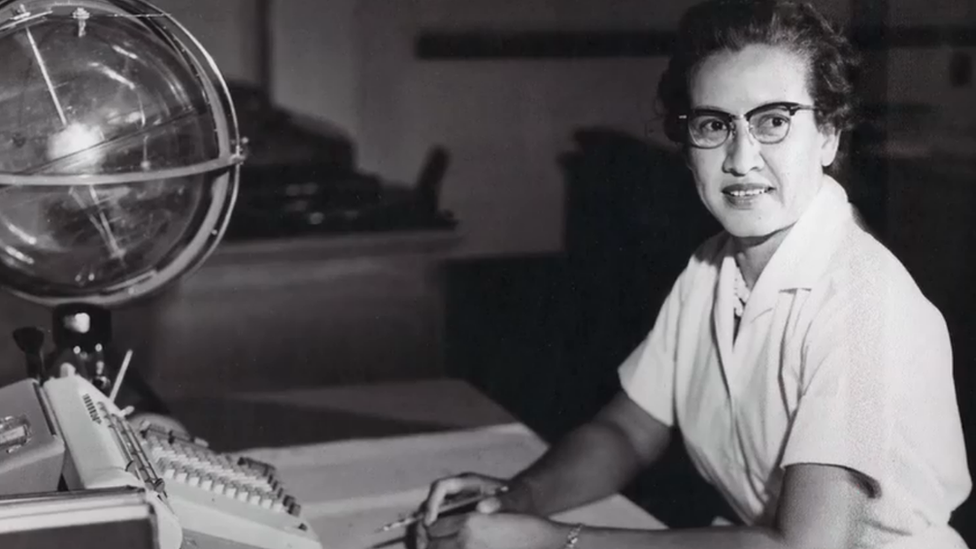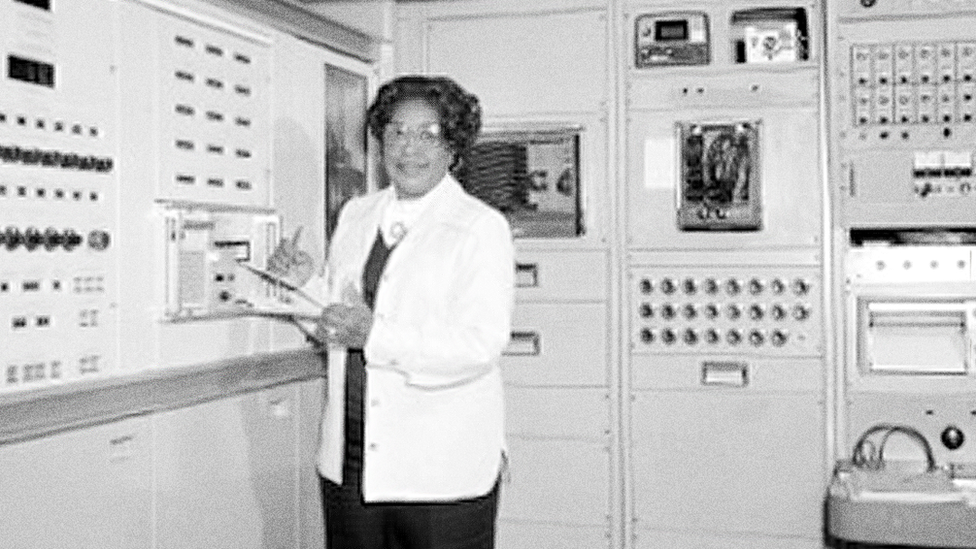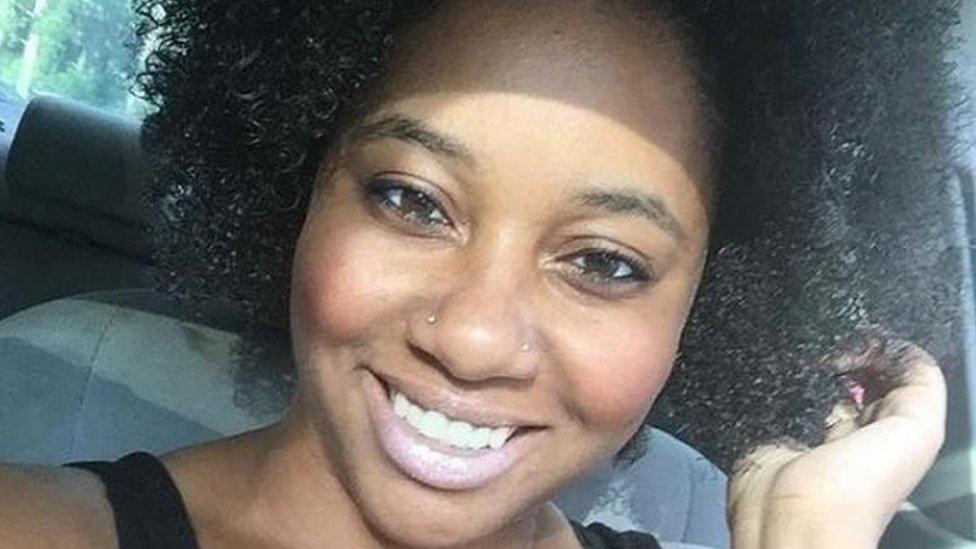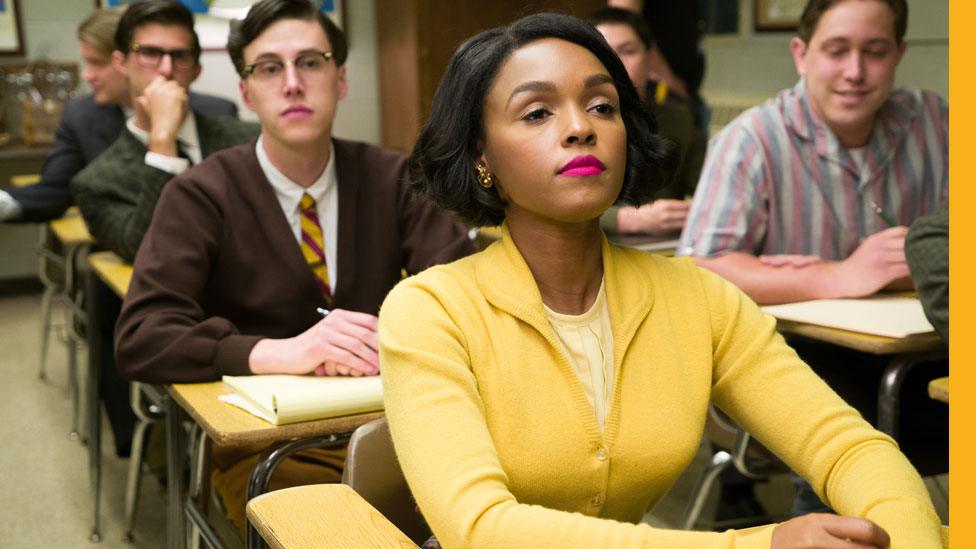Hidden Figures: Nasa renames street after black female mathematicians
- Published

Katherine Johnson calculated the trajectory for Alan Shepard, the first American in space
The street outside Nasa's headquarters has been named "Hidden Figures Way", in honour of three African-American women whose work helped pave the way for future generations at the space agency.
The Washington DC street's name is a nod to the title of a book and film about the lives of Katherine Johnson, Dorothy Vaughan, and Mary Jackson.
They made significant contributions to space flight in the 1960s.
But their successes and struggles were not widely known until decades later.
"'Hidden Figures' is about taking off our blinders and recognising the contributions of the unseen individuals who were there at the beginning of the story," Margot Lee Shetterly, who wrote the 2016 book which inspired the Oscar-nominated film, told the audience gathered in Washington.
"And whose persistence and whose courage delivered us to where we are today."
Ms Shetterly attended the unveiling of the street sign alongside members of each woman's family.
Allow X content?
This article contains content provided by X. We ask for your permission before anything is loaded, as they may be using cookies and other technologies. You may want to read X’s cookie policy, external and privacy policy, external before accepting. To view this content choose ‘accept and continue’.

Republican Senator Ted Cruz, who cosponsored a bill to rename the block, said he hoped the name would inspire future generations.
"When little girls and little boys come to see NASA, they're going to look up and see that sign," he said.
"This sign is a powerful testament that anyone who is telling a little girl or a little boy 'You can't do something', is not telling the truth."

Mary Jackson became Nasa's first black female engineer in 1958
Nasa began recruiting some college-educated African American women in the 1940s as "human computers", but they experienced both racial and gender discrimination at work.
The renaming of the street comes ahead of 50th anniversary of the first moonwalk by NASA astronauts on 20 July.
Nasa recently announced it would send Americans back to the moon by 2024, including the first woman to walk on its surface.
Fewer than 11% of the 500-plus people who have travelled to space have been women, the space agency said.
- Published17 May 2019

- Published18 February 2017
